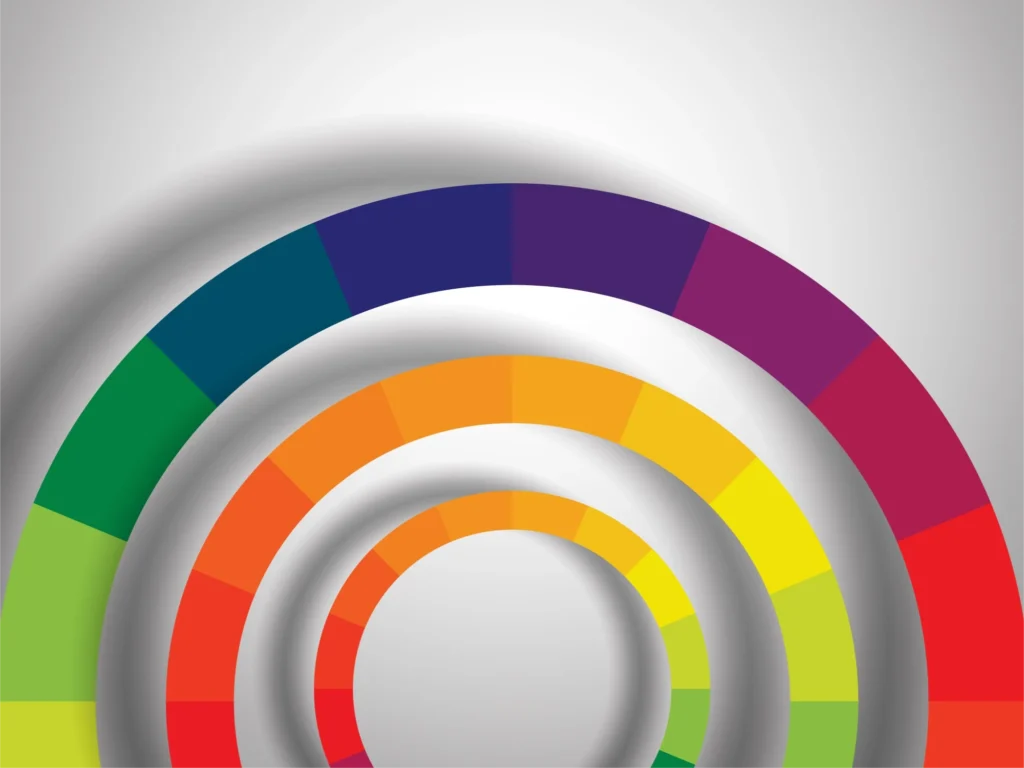
Color plays a powerful role in human psychology, influencing emotions, perceptions, and behaviors. In digital marketing, the strategic use of color can impact brand recognition, customer engagement, and conversion rates. Understanding the psychology of color in digital marketing is essential for businesses looking to create an impactful online presence.
Why Color Matters in Digital Marketing
Color is more than just an aesthetic choice—it conveys emotions and messages that can shape a consumer’s perception of a brand. Research suggests that up to 90% of first impressions about a product are based on color alone. In a digital landscape where attention spans are shrinking, selecting the right colors can mean the difference between capturing a visitor’s interest and losing them to competitors.
Emotional Triggers Associated with Colors

Each color evokes specific emotions and responses. The psychology of color in Digital Marketing, where marketers can use this knowledge to align their brand with the right
psychological cues:
- Red: Passion, urgency, excitement, and energy. Used by brands like Coca-Cola and YouTube to create a sense of urgency and enthusiasm.
- Blue: Trust, security, and professionalism. Common among banks, tech firms, and corporate brands like Facebook, LinkedIn, and PayPal.
- Green: Growth, health, and nature. Often used by brands in the wellness, organic, and finance industries.
- Yellow: Happiness, warmth, and optimism. McDonald’s and Snapchat use yellow to evoke cheerfulness and energy.
- Orange: Creativity, friendliness, and confidence. Brands like Fanta and Nickelodeon leverage orange to appear youthful and fun.
- Purple: Royalty, luxury, and wisdom. High-end brands like Cadbury and Hallmark use purple to create an air of sophistication.
- Black: Elegance, power, and exclusivity. Luxury brands like Chanel and Nike utilize black to convey prestige and minimalism.
- White: Simplicity, cleanliness, and modernity. Apple and Tesla use white to emphasize sleek and innovative design.
The Role of Color in Branding
The psychology of color in digital marketing significantly influences branding. A consistent color palette helps businesses create strong brand recognition and loyalty. Research indicates that color can improve brand recognition by up to 80%. This is why companies carefully select brand colors that align with their messaging and values.
For example, healthcare brands often use blue because it signifies trust and reliability, while eco-friendly brands lean towards green to symbolize sustainability. When brands deviate from these established color associations, they risk confusing potential customers.
Using Color to Enhance Website Conversions
Beyond branding, the psychology of color in digital marketing directly impacts website conversions. The right color combinations can guide user behavior and influence actions like clicking a button, signing up for a newsletter, or making a purchase.
Call-to-Action (CTA) Buttons
CTA buttons play a crucial role in digital marketing, and color choice can make or break their effectiveness. Here’s how different colors impact CTAs:
- Red: Creates a sense of urgency and encourages immediate action (e.g., “Buy Now” or “Limited Offer”).
- Green: Often associated with a “Go” signal, making it effective for sign-ups or confirmations.
- Orange: Can stimulate enthusiasm and action, commonly used for “Get Started” or “Subscribe” buttons.
- Blue: Evokes trust and security, suitable for actions like “Learn More” or “Request a Demo.”
Studies show that changing a CTA button color can increase conversions by up to 21%. Marketers should A/B test different colors to determine what resonates best with their audience.
Color Psychology in Social Media Marketing

Social media is a visual-first platform, making the psychology of color in digital marketing particularly relevant. Each platform’s color scheme influences user engagement:
- Facebook (Blue): Promotes trust and social interaction.
- Instagram (Gradient of Pink, Orange, and Yellow): Stimulates creativity and warmth.
- Twitter (Blue): Encourages communication and reliability.
- LinkedIn (Blue): Reinforces professionalism and trustworthiness.
- TikTok (Black & Red): Represents boldness, energy, and excitement.
Brands should align their social media content with these color principles to enhance engagement and reinforce their identity.
Color and Cultural Differences
While the psychology of color in digital marketing is powerful, color meanings can vary across cultures. For example:
- In Western cultures, white represents purity and simplicity, while in some Eastern cultures, it signifies mourning.
- Red symbolizes luck and prosperity in China but can represent danger in other regions.
- Yellow is seen as a sign of happiness in the U.S., but in some Latin American countries, it can indicate mourning.
For global marketing campaigns, businesses should research cultural color perceptions to ensure their branding resonates correctly with their target audience.
Conclusion
Understanding the psychology of color in digital marketing allows brands to create stronger emotional connections with their audience, improve user engagement, and boost conversions. By strategically choosing colors that align with their brand identity and target market, businesses can enhance their online presence and drive better results.
In a highly competitive digital space, color is not just an afterthought—it’s a strategic asset that can significantly impact marketing success. Experimenting with color psychology, testing different hues, and aligning them with brand goals can unlock new levels of engagement and customer loyalty.
Get-In-Touch
For More strategies and ideas, Let’s Talk.
